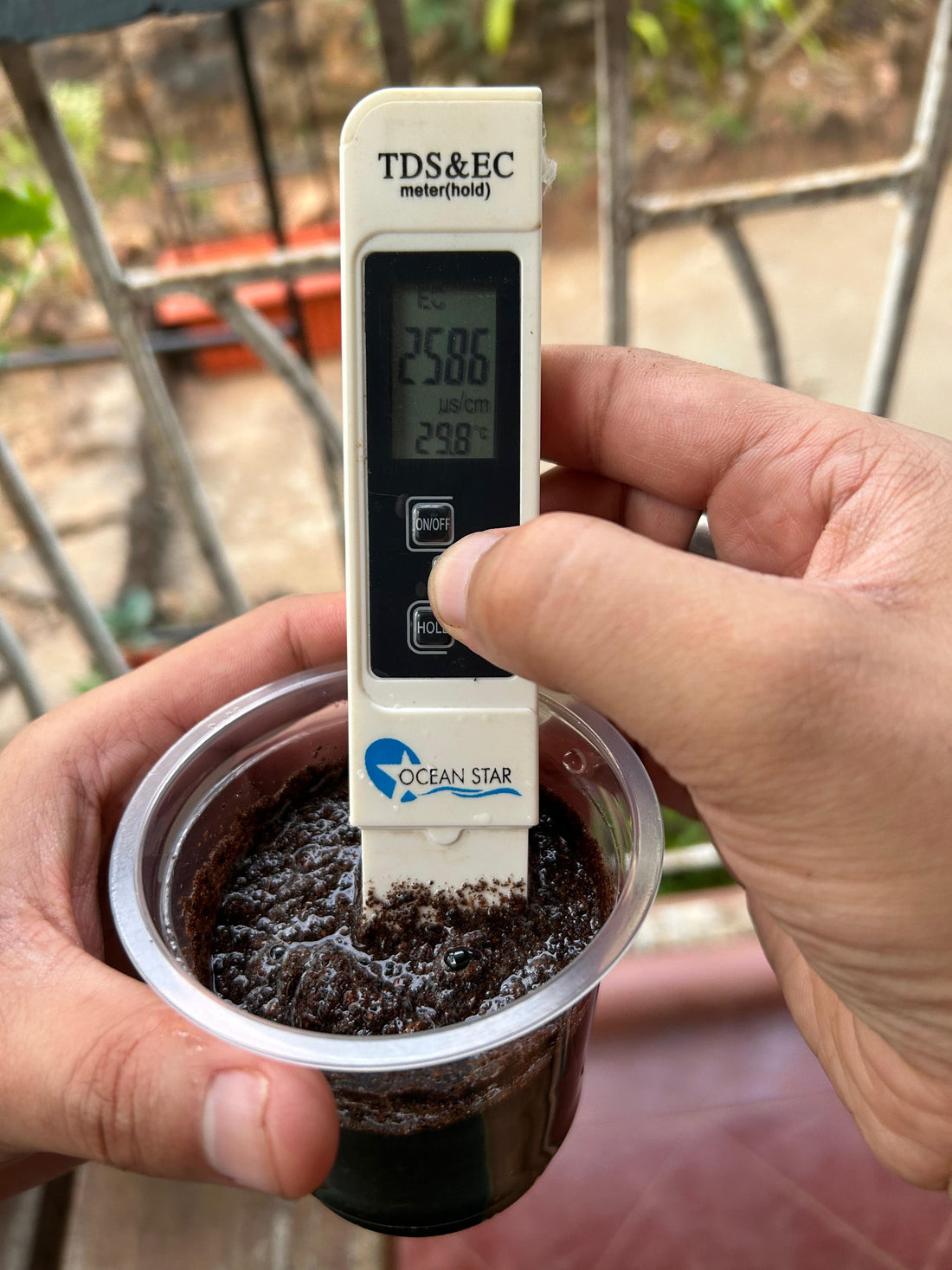
Low EC Cocopeat: Why It’s Necessary for Plants
Cocopeat, also known as coir pith, has become a popular growing medium for gardeners and horticulturists alike. Made from the fibrous husk of coconuts, it’s an eco-friendly alternative to traditional soil, offering several benefits for plants. However, one crucial factor that determines its quality and effectiveness is its Electrical Conductivity (EC). For optimal plant growth, low EC cocopeat is essential. Here’s why:
Understanding Electrical Conductivity (EC)
Electrical Conductivity is a measure of the salt content in a material. In the context of cocopeat, a high EC indicates excessive salt levels, which can be detrimental to plant health. Low EC cocopeat, on the other hand, has undergone thorough washing and treatment to remove these salts, making it safe and beneficial for plants.

Why Low EC Cocopeat is Necessary for Plants
1. Prevents Salt Build-Up
Excessive salts in high EC cocopeat can accumulate in the root zone, leading to osmotic stress. This disrupts the plant’s ability to absorb water and nutrients effectively, causing stunted growth, yellowing leaves, and poor overall health. Low EC cocopeat eliminates this risk by maintaining a balanced salt level.
2. Enhances Nutrient Uptake
High salt concentrations can interfere with the absorption of essential nutrients like potassium, calcium, and magnesium. By using low EC cocopeat, plants can access these nutrients without competition from harmful salts, resulting in healthier and more robust growth.
3. Protects Seedlings and the Germination Process
Seedlings are highly sensitive to salt levels in their growing medium. High EC cocopeat can cause poor germination rates, weak seedlings, and root burn due to salt toxicity. These issues often result in delayed or uneven germination, leading to unhealthy plants from the start. In contrast, low EC cocopeat provides a safe, nutrient-friendly environment, promoting strong germination and healthy early growth.
4. Suitable for All Plants
Low EC cocopeat is versatile and suitable for a wide range of plants, including sensitive ones like orchids, succulents, and seedlings. These plants are particularly vulnerable to saline conditions, making low EC cocopeat an ideal growing medium.
5. Improves Water Retention and Aeration
The structure of cocopeat allows it to retain water while providing adequate aeration to the roots. However, high salt levels can compromise this balance, causing the medium to dry out quickly or become waterlogged. Low EC cocopeat ensures consistent moisture levels and proper air circulation for healthy root development.
6. Promotes Sustainable Gardening
Low EC cocopeat is an environmentally friendly option that reduces the reliance on chemical additives to neutralize salts. It supports sustainable gardening practices by providing a natural, biodegradable, and reusable growing medium.
How to Know if Your Cocopeat is Low EC
To ensure your cocopeat is low EC, follow these steps:
Conduct a Simple EC Test:
Soak a small amount of cocopeat in distilled water (1:1 ratio). Stir and let it settle for about 15 minutes ⏱️.
- Use an EC meter to measure the electrical conductivity of the water. A reading below 0.5 mS/cm indicates low EC cocopeat
- Below is an image of cocopeat having high EC --> 2.586 mS/cm

Look for Certification:
Reputable brands label their cocopeat with certified EC levels. Always choose products explicitly marked as low EC.
Check Packaging Information:
Look for details on washing, buffering, or treatment processes that ensure low EC levels.
Customer Reviews:
Read reviews and feedback about the product. Other gardeners’ experiences can be a reliable indicator of its quality.
FAQs About Low EC Cocopeat
Q: What does EC mean in cocopeat?
A: EC (Electrical Conductivity) measures the salt content in cocopeat. High EC indicates more salts, which can harm plants, while low EC cocopeat has been treated to remove excess salts, making it safer for plant growth
Q: How can I lower the EC in cocopeat?
A: You can reduce EC by thoroughly washing cocopeat. Soak it in water, drain, and repeat the process 2-3 times until the EC measures below 0.5 mS/cm using an EC meter.
Q: Can high EC cocopeat harm my plants?
A: Yes, high EC cocopeat can lead to salt buildup in the root zone, causing osmotic stress, poor nutrient absorption, and root damage, especially in sensitive plants and seedlings.
Q: Is low EC cocopeat suitable for all plants?
A: Absolutely! Low EC cocopeat is versatile and works well for all plants, including orchids, succulents, vegetables, and seedlings.
Q: Does low EC cocopeat require additional nutrients?
A: Cocopeat itself is nutrient-free, so you may need to supplement it with organic fertilizers or choose pre-mixed soil blends like SoilAce Soil Mixes, which combine cocopeat with essential nutrients.
Q: How do I store low EC cocopeat?
A: Store cocopeat in a cool, dry place away from direct sunlight to maintain its quality and moisture retention properties.
Q: Where can I buy high-quality low EC cocopeat?
A: You can find premium low EC cocopeat at www.soilace.in, ensuring your plants get the best care.
Low EC cocopeat is a game-changer for gardeners seeking a healthy, versatile, and sustainable growing medium. By preventing salt build-up, enhancing nutrient uptake, protecting sensitive seedlings, and promoting better water retention, it creates the perfect environment for plants to thrive. Whether you’re cultivating vegetables, flowers, or houseplants, investing in low EC cocopeat is a smart and sustainable choice for your garden.
For high-quality low EC cocopeat and other eco-friendly gardening solutions, explore www.soilace.in. Your plants will thank you!

